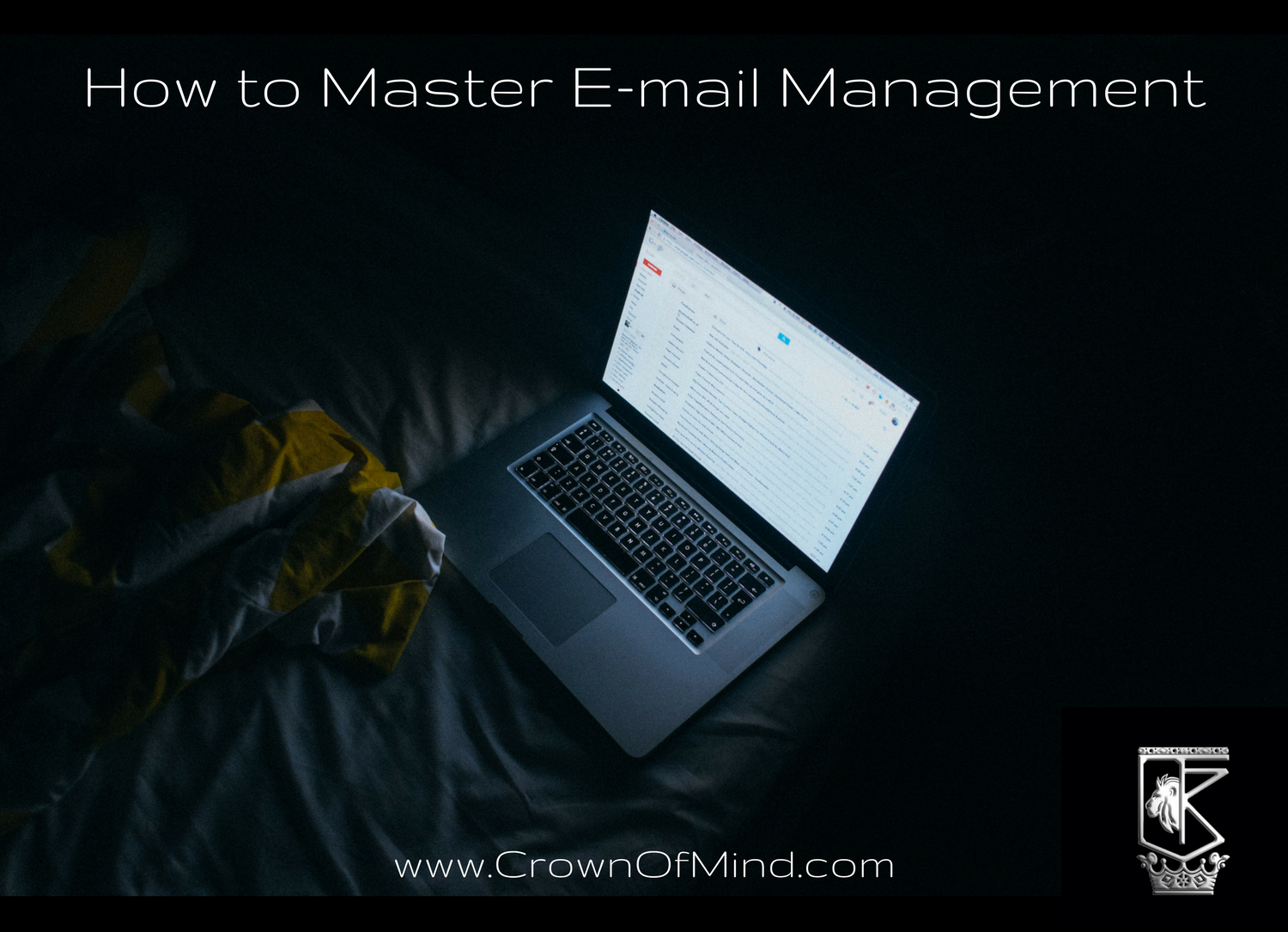Two conversations over the past days sparked interest in covering E-mail management. Checking my inboxes from the multiple E-mail accounts, I thought having 40-60 new messages was a large number.
Some of us are working with 1000-18,000 new inbox messages! Reflected on my time career counseling college students and this was also prevalent. One guy had over 18,000 and he worked in politics. When I asked him how he organized important messages, he explained he’d just search the name with the search bar. Imagine having to deliberately search people’s names every time you needed to locate a valuable message.
E-mail management may be overlooked but it’s important for several reasons, especially if you have high professional involvement.
- The external influences the internal. This is a parallel to Tehuti/Thoth’s Emerald Tablet’s “As Above, So Below, As Within, So Without.” Physical clutter can manifest mental clutter, and mental clutter can produce physical clutter. Similarly, digital clutter can spark mental clutter and mental clutter can create digital clutter.
- Energy moves where attention is directed. “Make your energy flow to your hands” is a rather abstract request, for example. How does one will the energy to move specifically to the hands? Like car wheels turning, we don’t step out of the car to physically turn the wheels right or left, we use an intermediary to gain control (the steering wheel). To move the energy we can focus our attention on a space, and the energy begins moving there. Want to direct energy to your hands? Look at your hands, wiggle your fingers, make a fist. Want to move energy to your legs? Move your legs. Stretch them. When we apply this principle to E-mail clutter, our attention becomes divided among all of the messages. This division weakens the power provided to each message’s content. Consequently, we can lose focus and make mistakes. Or, we can drive ourselves into unnecessary mental fatigue.
E-mail may be one of the least-focused spaces for thinking of management, but E-mail really is just a digital version of snail mail. The equivalent of a messy inbox is a stack of paper mail never opened, out of date that just builds up over time.
The clarity that comes from an efficient inbox will free up mental resources for you to give stronger attention to other matters, not to mention you’ll be able to know exactly where to find particular messages and who is sending them.
If you’re involved in any professional activity you can count on E-mail being an important communication tool. Since there are various personality styles, communication best practices will need its own post. Here we’ll focus on content management.
E-mail Content Management
Create Folders.
Folders are available for you to categorize your messages. They allow for you to effectively clear your inbox after you receive the E-mail. Create folders based on the content. Use folder names you connect to personally and not what someone else tells you make. You want to have a direct connect to the names, as you’ll remember them easier. Instead of “News,” choose “Local Spy Info,” for example.
Move your new E-mail to folders before reading them.
Why not read your E-mail and then move them into the folder? Doing so will take more time and the goal is efficiency managing the content, not reading it. If you receive a message, the title and sender will indicate to you whether or not it’s an urgent read. If it’s not urgent, move it to its appropriate folder. Keeping your inbox clean will offer a sense of digital stability and allow you to plan strategy around reading messages in the future.
Create a signature.
I wanted to add this because it’s important for your replies. You don’t want to have to keep copying and pasting your contact information, also time-consuming. Go to your E-mail settings and create a signature. It should include your name, some means of contact information and a few words on your purpose. When you now reply to your messages, the signature will speak for you automatically and all you have to do is focus on writing your message.
Choose an unread message limit.
What’s your unread message limit? If you don’t have one, you allow for an unlimited number of messages to fill up your inbox before checking. Imagine having no limit to the snail mail that builds up. At some point it’ll accumulate to a point where your attention is mandatory; something will need to be taken care of. Choose a number. 15, 20, 80? Whatever you select, that’s the number you don’t go beyond. When you reach 80 unread messages it’s time to perform a clean out.
Create a dummy E-mail account.
Do you like websites that persuade you to sign up to the newsletter in exchange for a free product? By doing so you allow them to include you on their future E-mails. I also have one of these lead magnets on The Crown. Instead of filling up your professional or personal E-mail account, create a dummy account and purpose it just for these kinds of information. I have one account that’s strictly for newsletters. If I have a unique connection to the content, I’ll use my main E-mail. If it’s a junk account, I use the junk E-mail and read the updates when convenient.
Know your E-mail account types.
Vital for Mobile Phones: if you have multiple E-mail accounts, don’t waste time signing in and out of them through your mobile browser. For iPhone users especially, go to your “Settings” tab and then “Accounts & Passwords.” From there you can add all of the accounts you work with. Then you can use the “Mail” app and sync your different accounts. This will give you a landscape view of your accounts.
Get Used to Unsubscribing.
Subscribing is an easy act. Let’s make unsubscribing just as easy! One way to reduce your E-mail flow is to unsubscribe as soon as you find the content to be no longer valuable. The inbox accumulates as we build more relationships, or continue registering on websites, putting our E-mails down on applications, magazines and other kinds of roundups that offer an exchange for it.
These are a few of many ways we can organize our digital mail centers. Happy Spring Cleaning.






